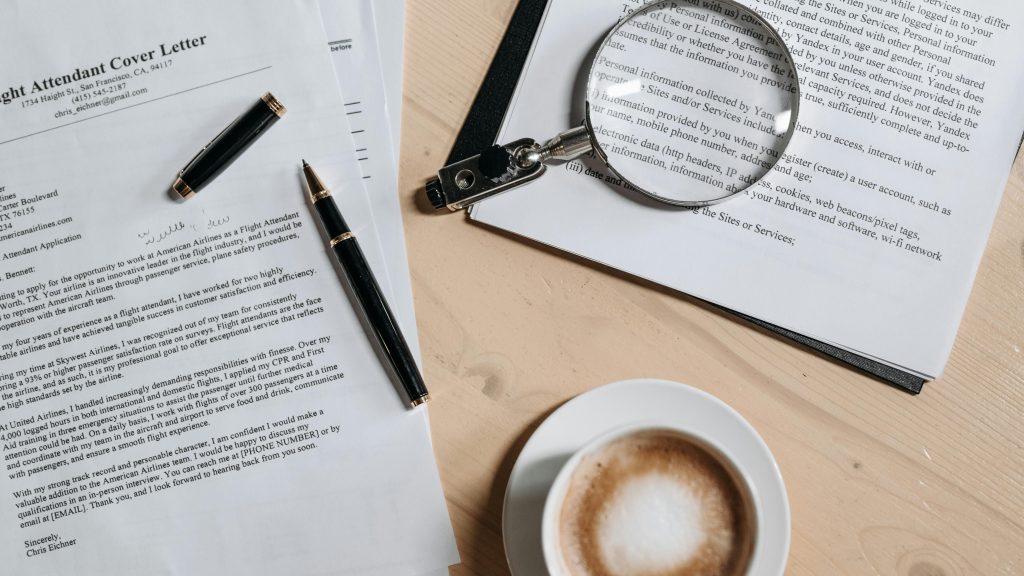If you ask some people “What Is The Difference Between A Cover Letter And Supporting Statement?” they might not be able to answer the question and it is because there seem to be similarities between both documents. Support statements and cover letters have the same mission; however, they differ in structure, tone and intent. Understanding these differences ensures you can write stronger, more focused applications.
In this guide, we will take a look at their important differences, when and how to use each, as well as how to write them. At the end, you will find the things that rock your application.

Source: Pexels
Supporting Statement: What Is A Supporting Statement?
The supporting statement is an official form of writing and will be made for your specific criteria as given on the job description. Employers usually ask about it in a formal application process as you would see in the public sector, education or non-profits.
A supporting statement isn’t like a CV/resume; it’s not just listing achievements but showing your experience related to the role. The simple purpose of a supporting statement is to confirm that you are the right person for the role.
It is the best employers place on you to see how better you match up to them. For example, if in the job description it mentions “excellent communication skills” and “project management experience”, your supporting statement should refer to these two points directly, providing examples.
Let’s look at the format for writing a supporting statement.
- Introduction: Give a brief overview of why the role interests you and what makes you fit for it.
- Criteria match: Answer every requirement and give illustrations of the way you meet them.
- Conclusion: Reiterate your excitement and why you overall would be a great fit.
What Is A Cover Letter?
A cover letter is less rigid and more narrative based which also introduces you to potential employers. It sits alongside your CV or resume, giving context to your qualifications.
Consider it your private pitch: an opportunity to tell the reader who you are, why you are applying, and why you are the best match for this position.
The purpose of a cover letter is to relate the skills and experiences you have acquired to the mission and culture of the company. A cover letter is what gives life to the qualifications listed on your CV. This is your chance to demonstrate excitement and passion for the position. Here’s the normal structure to follow for a cover letter:
- First Paragraph: Talk a bit about why you are applying
- Body: Showcase accomplishments and how they tie into the position
- Conclusion: Restate your interest and perhaps end with a call to action like asking for an interview
There is more space for creativity in covering letters than supporting statements. This means that they can be written in a formal way or informal (conversational) based on the role.
Differences Between Supporting Statements and Cover Letters
However, although both aim to put the spotlight on you as the best-fit candidate, they serve different purposes and vary in terms of tone and body structure. Here’s a breakdown:
- For the purpose, a supporting letter is written to show that you meet the criteria regarding the job. it should be factual and detailed. On the other hand, a cover letter is a more general introduction to your application and a role-specific explanation of how your skills fit. It’s personal and persuasive.
- The structure of a supporting statement has a series of headings for each job requirement, making it highly organized. However, cover letters ought to be narrative, telling a story and following a creative manner.
- The length of a supporting statement is usually between one to two pages but for a cover letter, the length is usually one.
- The tone of a supporting statement is usually formal with a focus on the evidence that is to be presented. For a cover letter, it can have a conversational tone.
- A supporting statement is used for highly structured roles such as the ones in public sectors like education and NGOs. Cover letter is generally used in most industries, accompanying the employee’s CV.
Under What Circumstances Would You Provide A Supporting Statement?
Supporting statements are crucial for the following reasons:
- They are crucial when required by your employer. This can be in both public sector and academic jobs, they are often mandatory.
- If there is a list of essential and desirable skills, the supporting statement is the ideal place to respond to these.
- They are crucial when the application structure demands it. Some online forms have areas for supporting statements.
These are the moments when the supporting statement is your chance to demonstrate that you have understood what they want and that you are their ideal candidate.
When To Use A Cover Letter?
A cover letter is used for most job applications so use a supporting statement if you are specifically asked to submit one. This is especially helpful when:
- You are applying along with a CV. In this case, the cover letter becomes an extension of your resume by providing more detailed information about your capabilities.
- When you want to stand out from the crowd.
- The role is in a creative or private sector
Common Mistakes To Avoid When Preparing a Cover Letter or a Supporting Statement
If you are writing a supporting statement or a cover letter these all score rubrics apply as common hazards to undermine your application.
- Mixing styles: A supporting statement is more factual and criteria-based, a cover letter should be narrative. But muddling both will only weaken your voice.
- Being too generic: Vague comments such as, “I’m a hard worker,” or “I am passionate about this role,” will not grab anyone’s attention. Give me details and concrete evidence to back up your arguments.
- Overloading with information: Do not add every piece of information regarding your career. Emphasizing the most appropriate roles or experience and customizing your content to the role.
- Ignoring the job description: By not addressing the job requirements or company core values, you can make your application seem lazy. Prove that you’ve done your research.
- Forgetting to proofread: Mistakes like typos and the like will give a bad impression. Before submitting anything, always recheck your documents.
Read also: A Day in The Life of a Business Analyst – Duties and Responsibilities
Wrap-Up: What Is The Difference Between A Cover Letter And a Supporting Statement?
Writing a supporting statement and cover letter is an important skill when applying for a job. Both documents are intended to prove that you are the ideal match for the job opening; however, they accomplish this in different ways.
A supporting statement is succinct and criterion-specific; it matches your skills with job criteria. While a resume is factual and straightforward, a cover letter is descriptive and convincing, providing the reader with an overall perspective of your credentials and interest in what they have to offer.
These differences matter for tailoring applications to impact the most. Clear evidence backed up examples in the supporting statement can really showcase to an employer that you are exactly what they are looking for. On the other hand, an engaging cover letter helps you to relate with the hiring manager at a personal level and this demonstrates your willingness to be part or your cultural fit into the company.
When combined, these tools provide you with an added advantage in job placement. By honing your skills and keeping this in mind, you can prepare documents that exceed expectations and get yourself one step closer to the role of your dreams.
